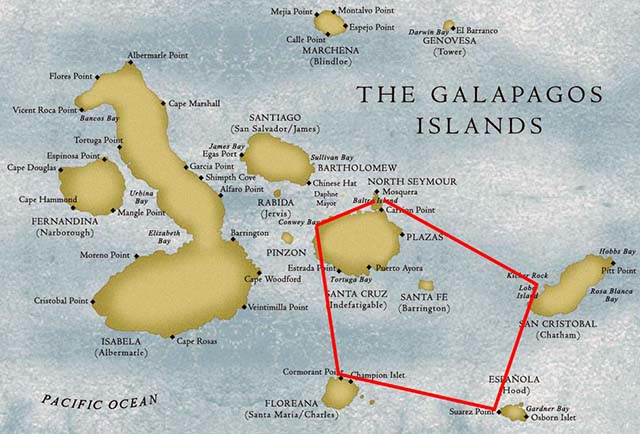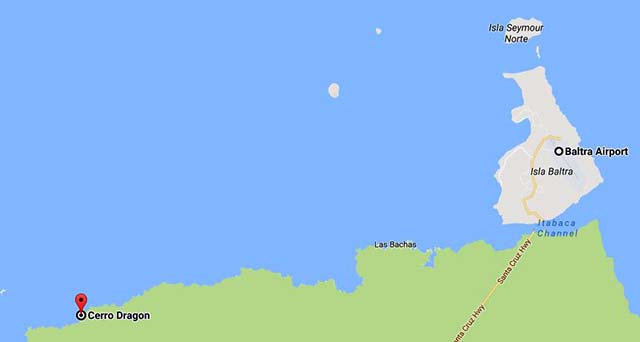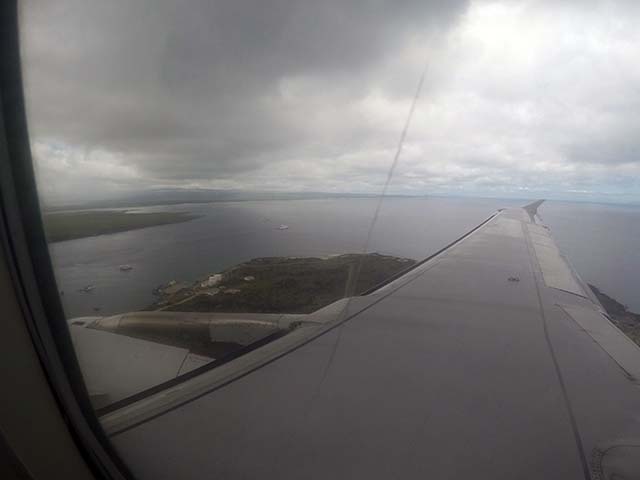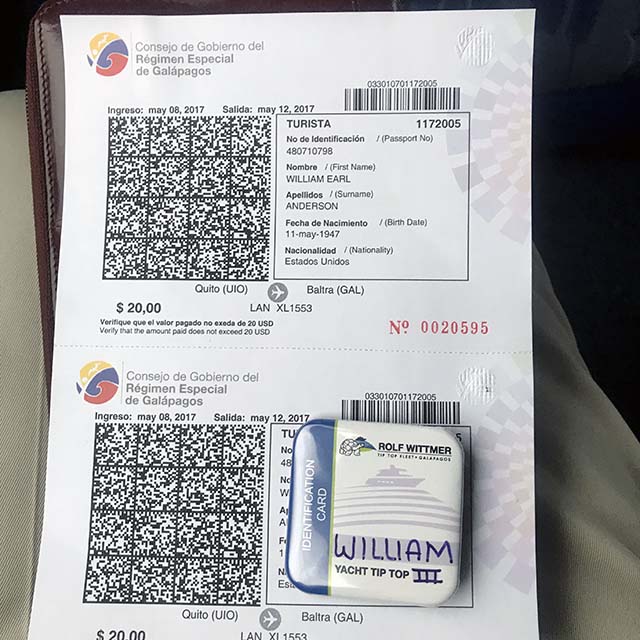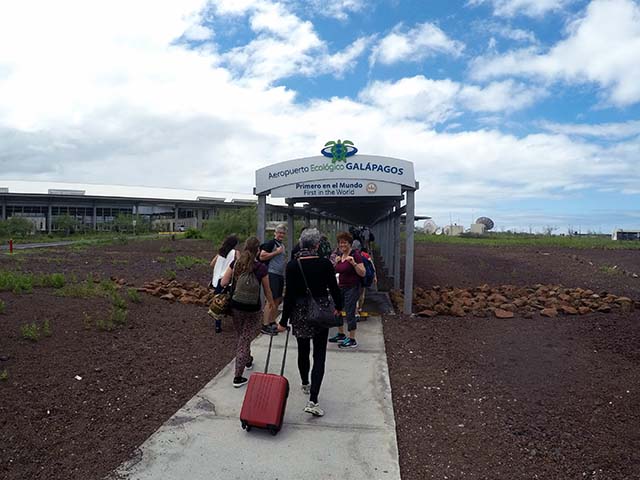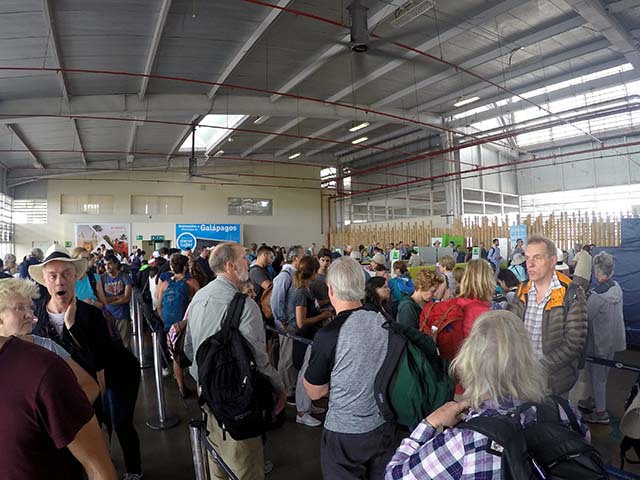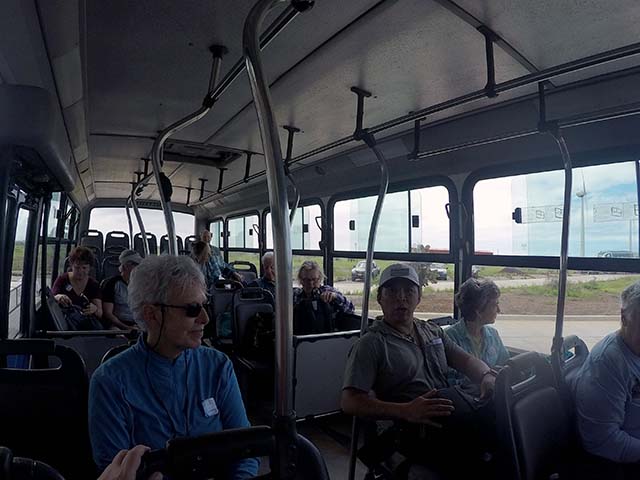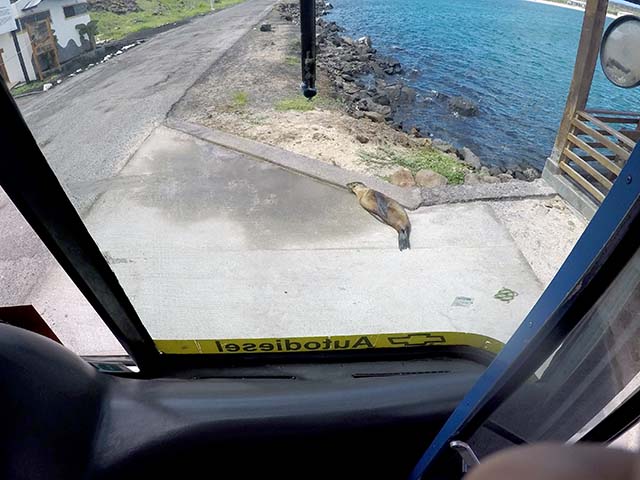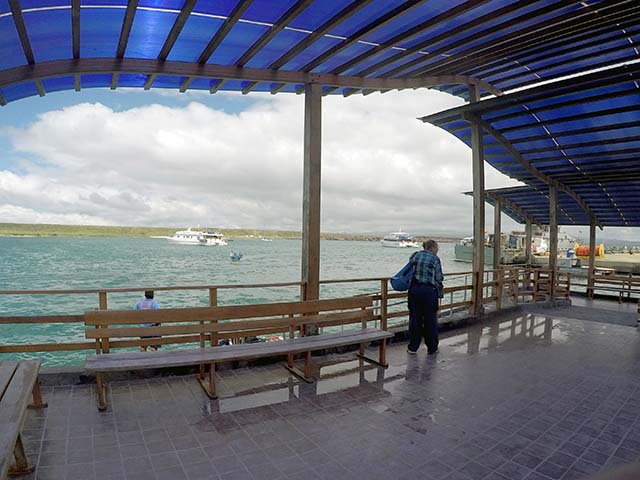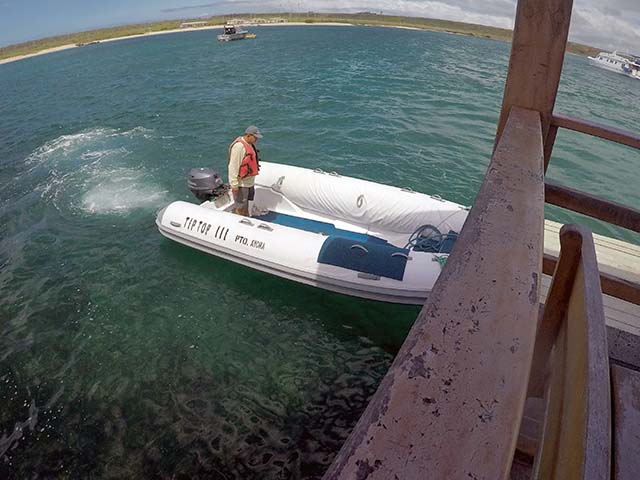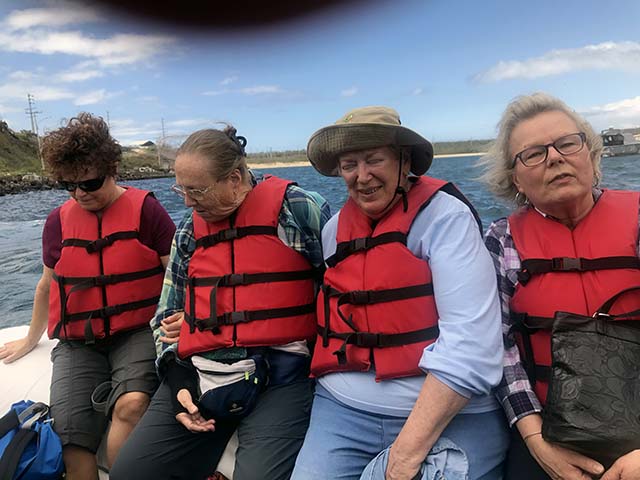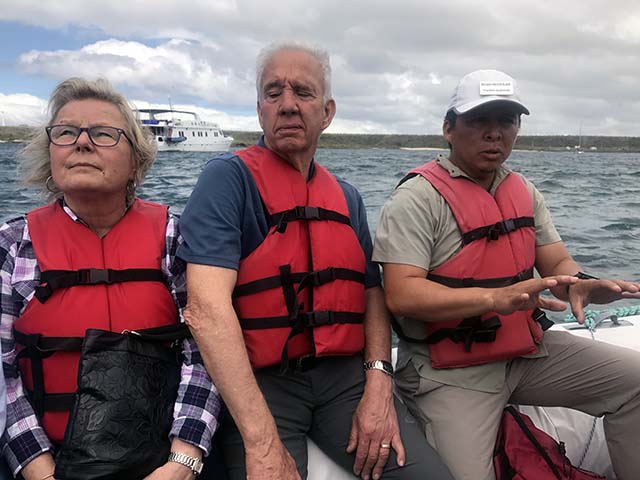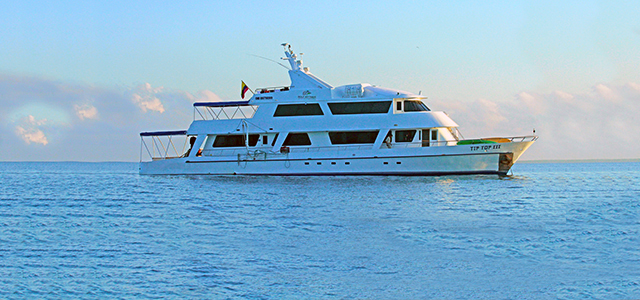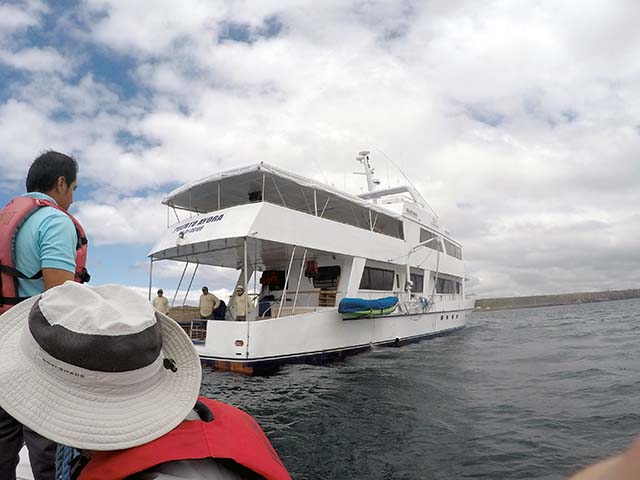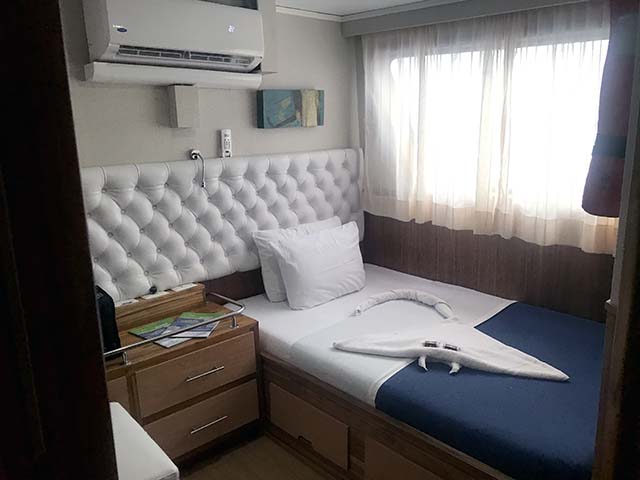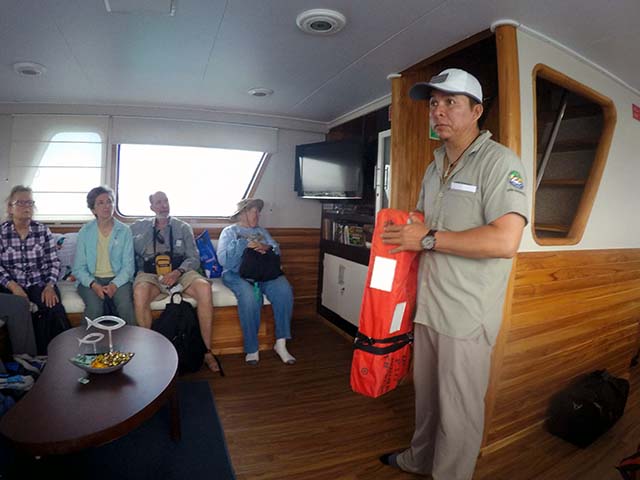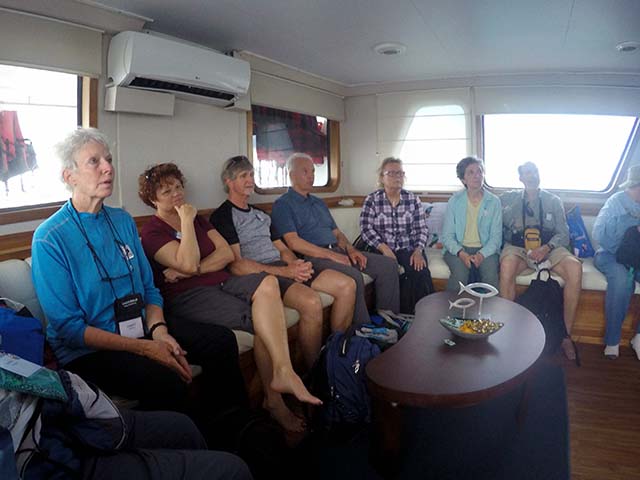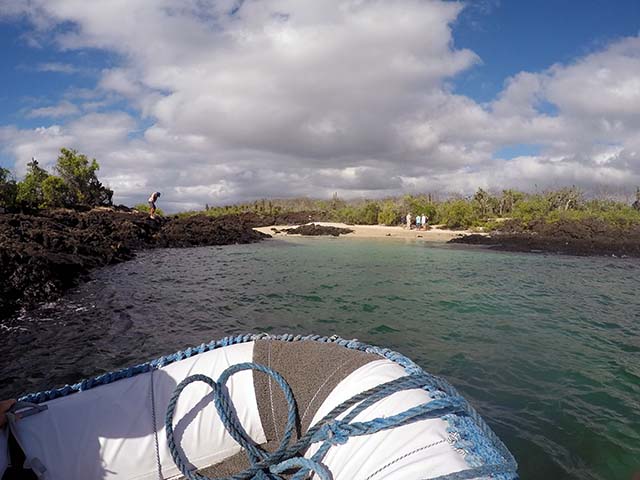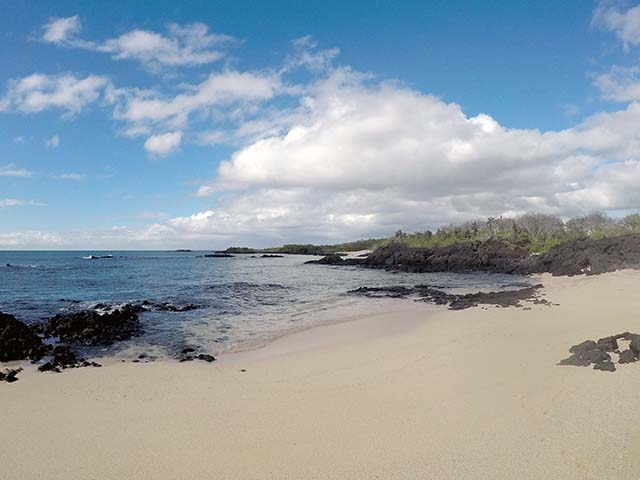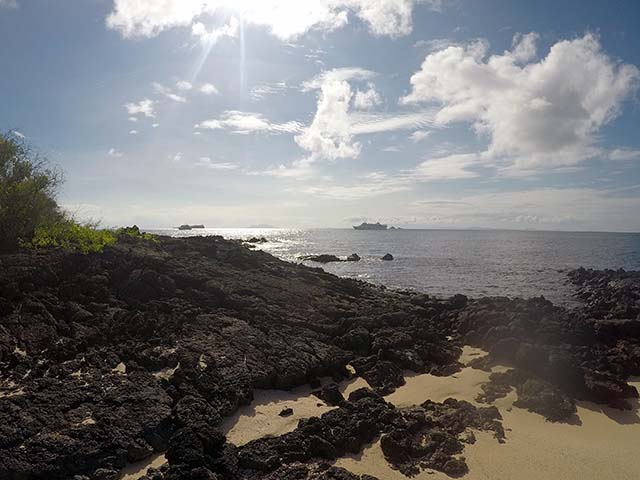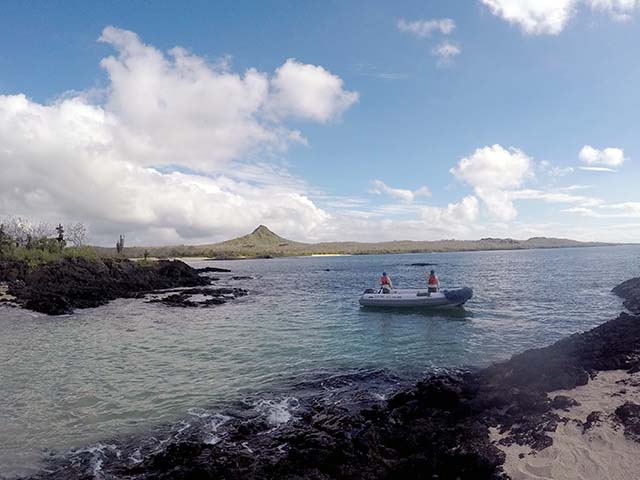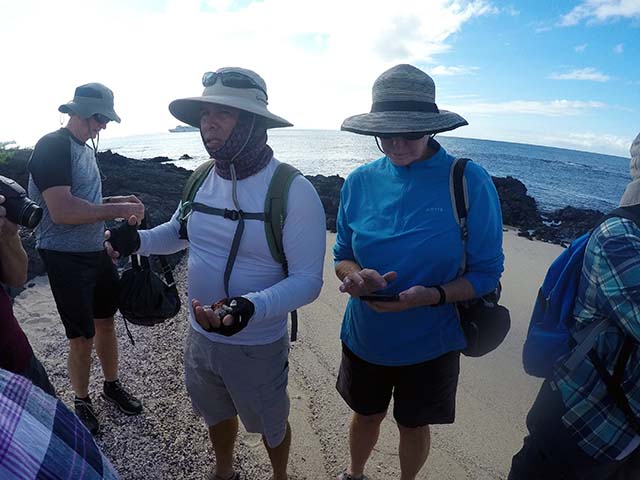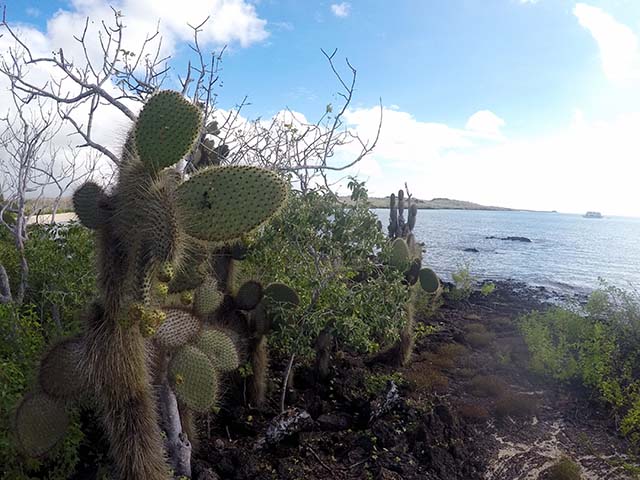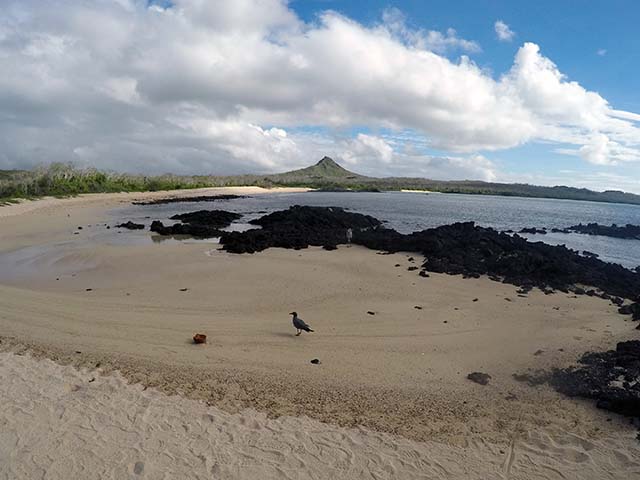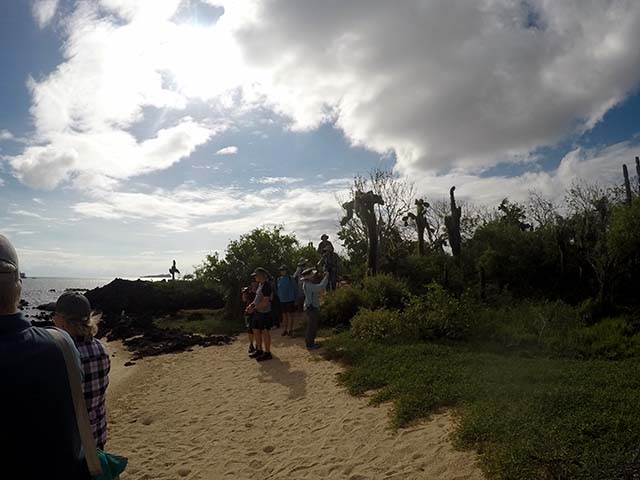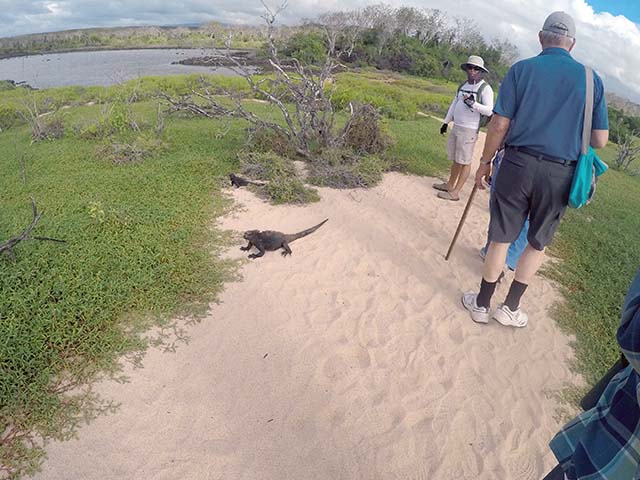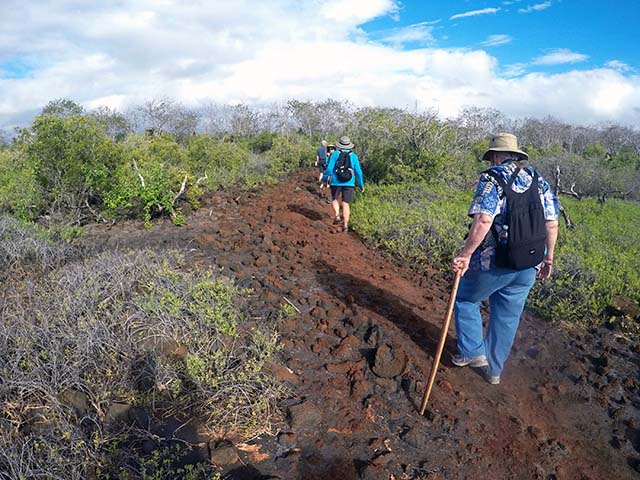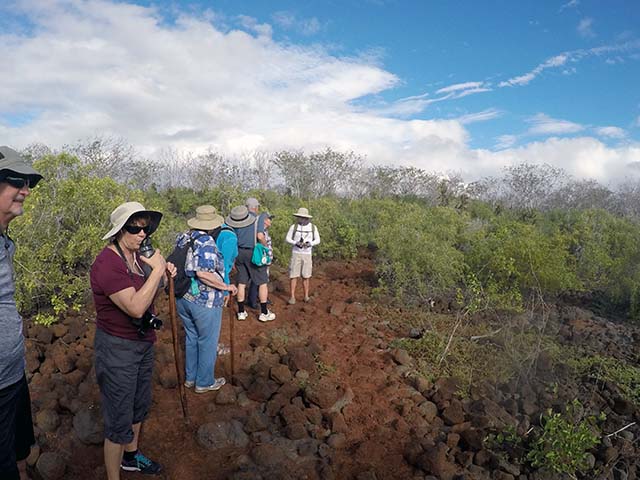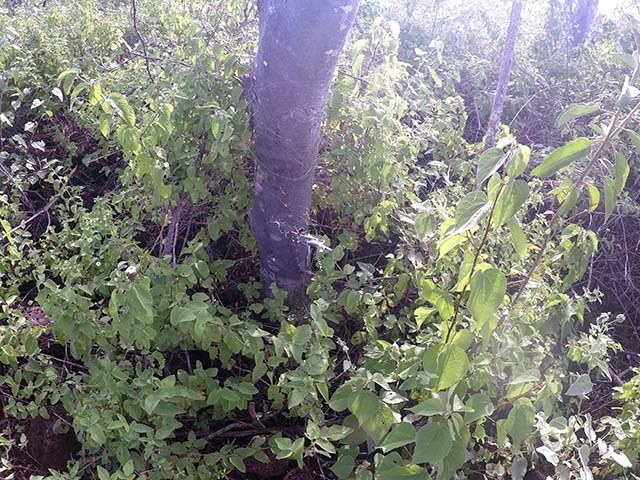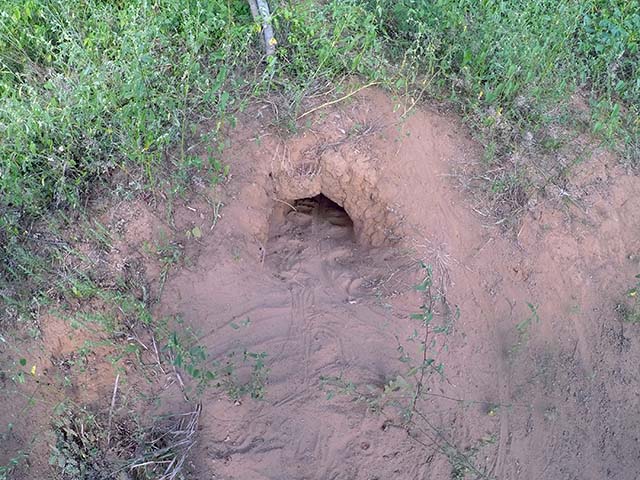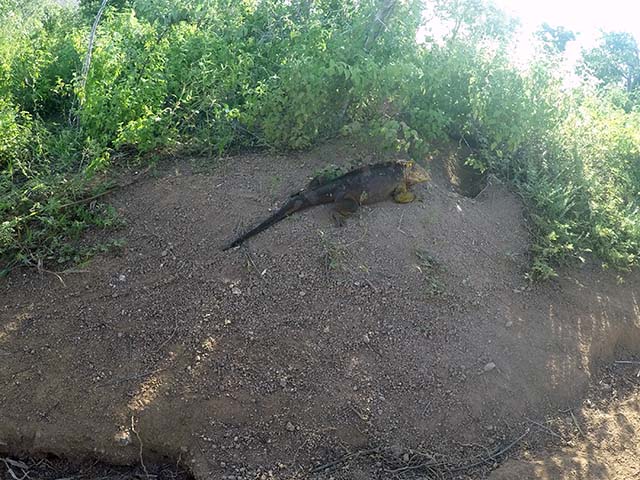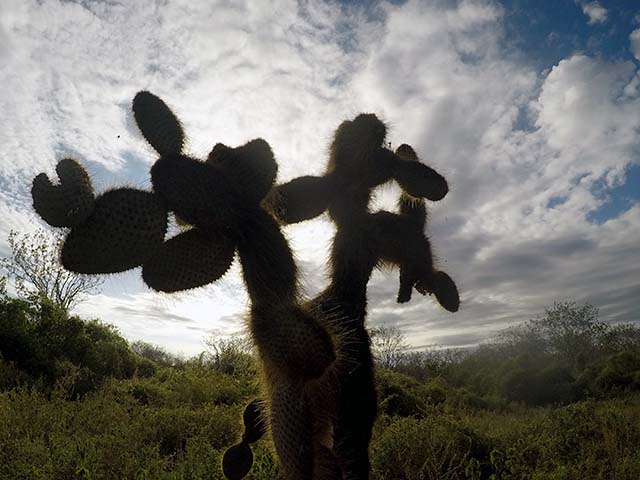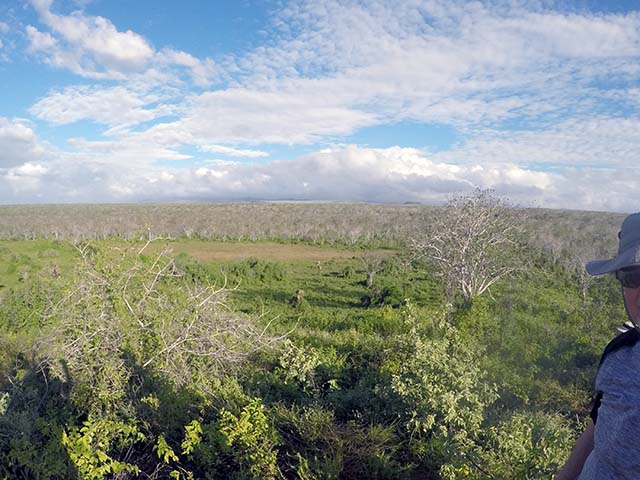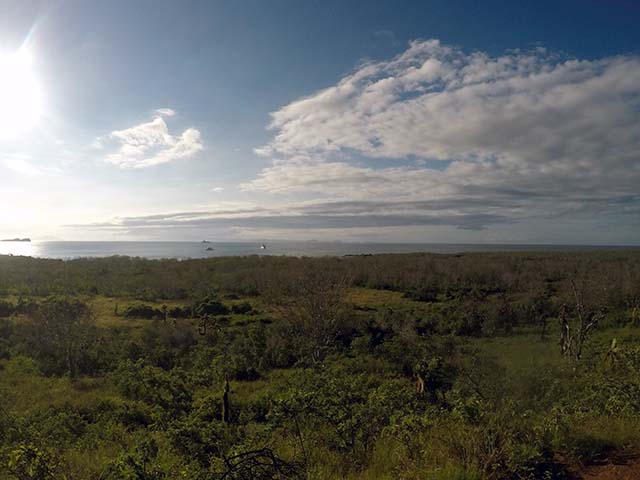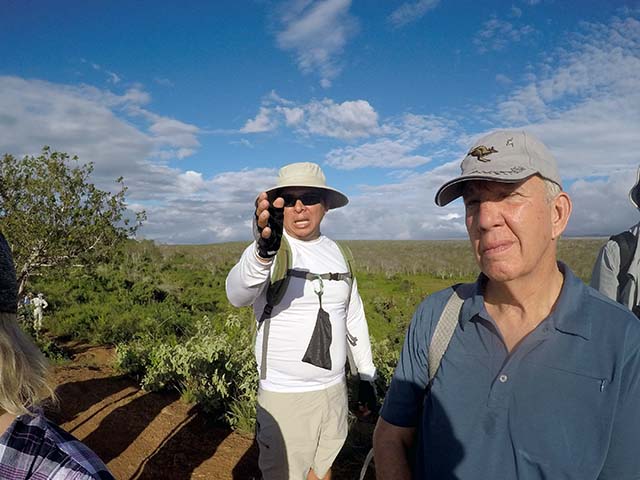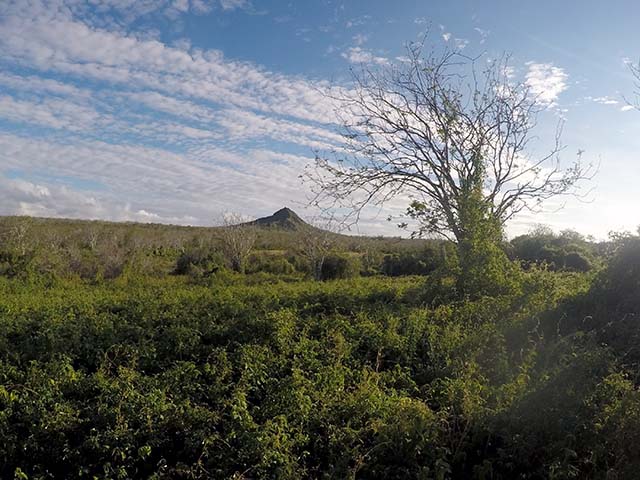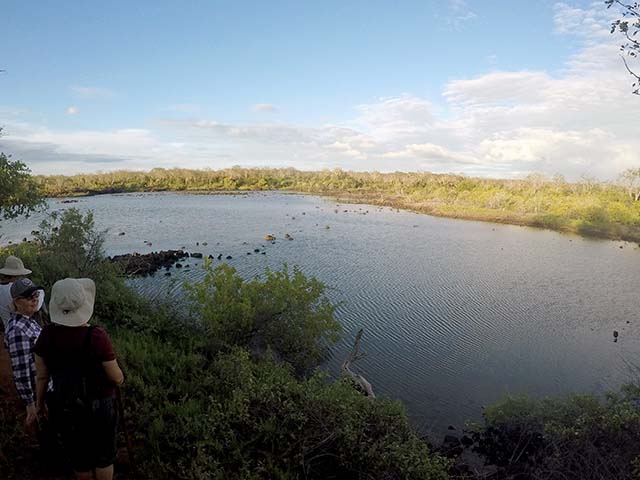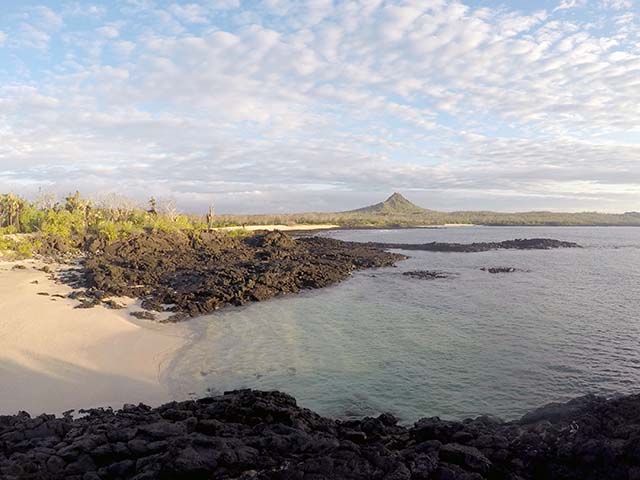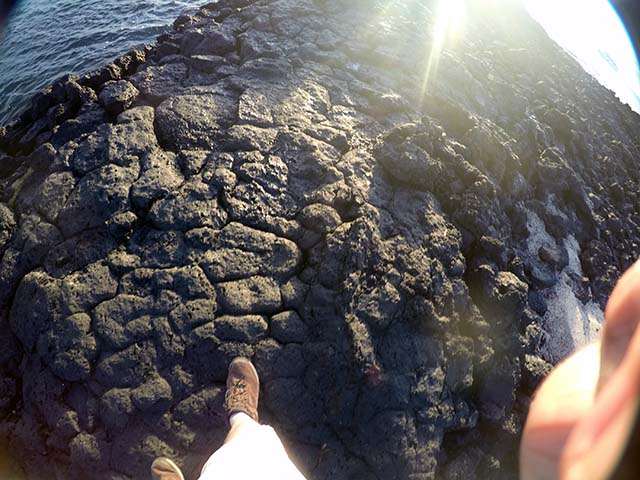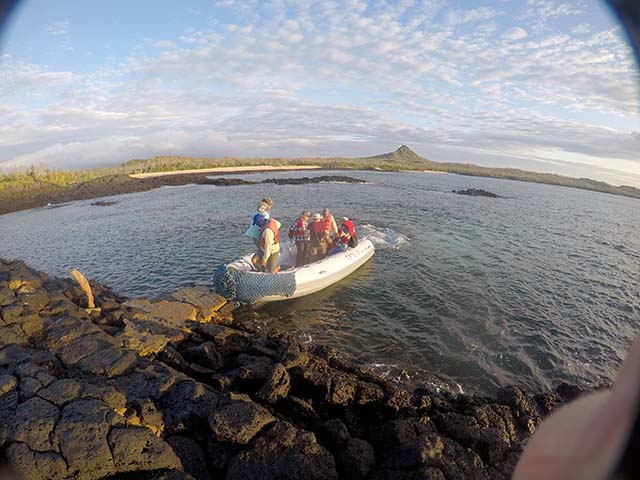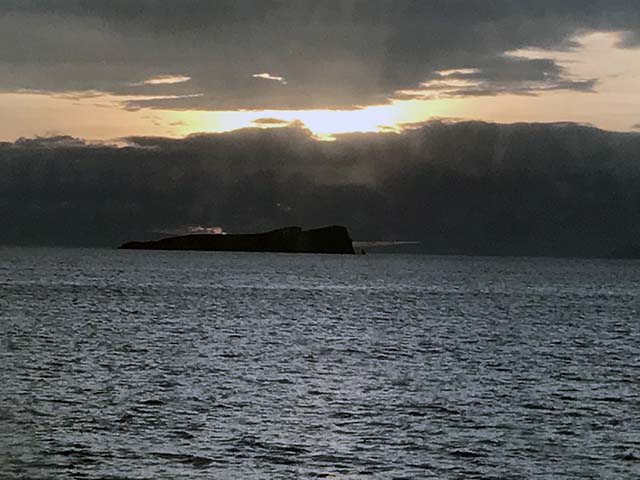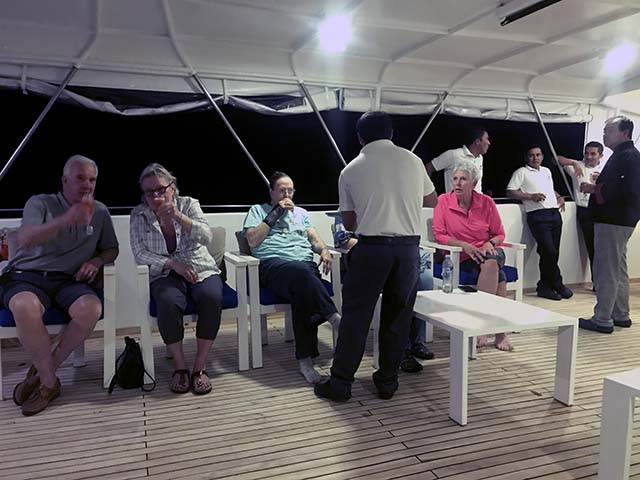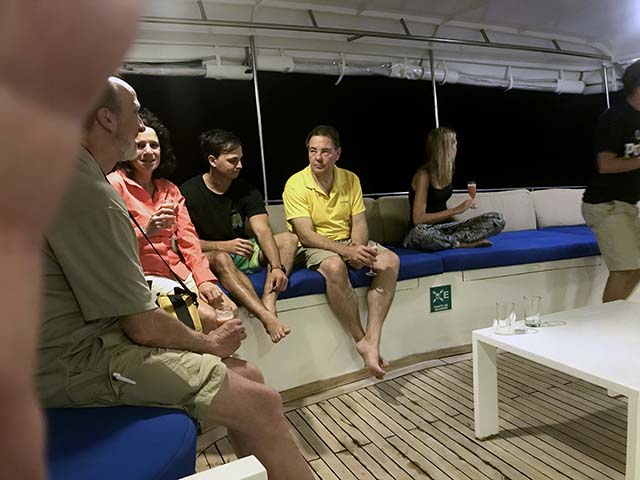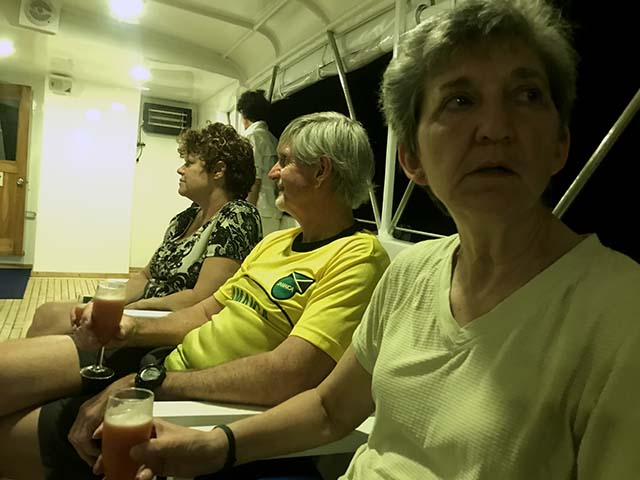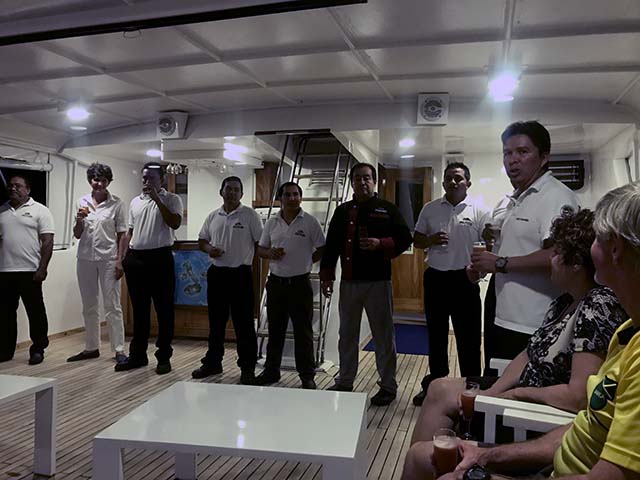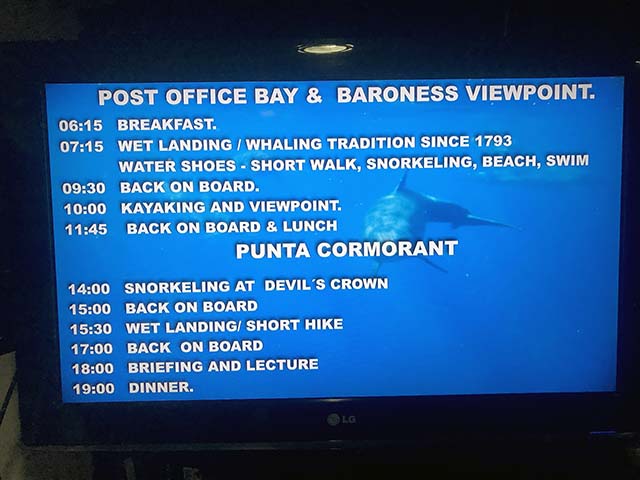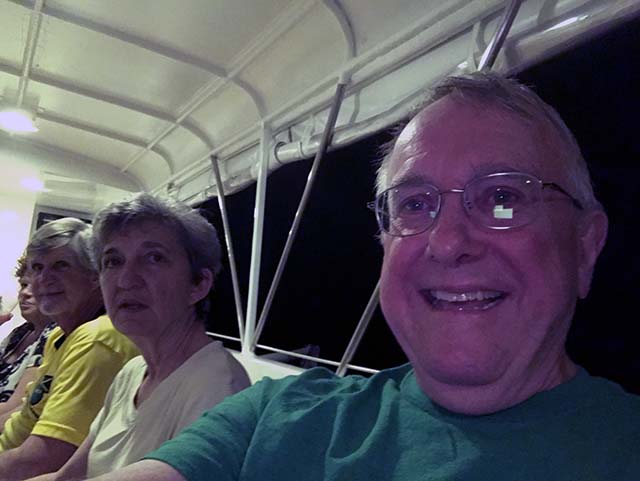|
This map shows the route we followed through the islands: Baltra Airport to Santa Cruz, to Floreana, to Española, to San Cristobal, and, on our final day, to North Seymour, and back to the airport on Baltra. Whew! Baltra Island, or Isla Baltra, is a small island of the Galápagos Islands. Also known as South Seymour (named after Lord Hugh Seymour), Baltra is a small flat island located near the center of the Galápagos. It was created by geological uplift. The island is very arid and vegetation consists of salt bushes, prickly pear cactus and palo santo trees. During World War II Baltra was established as a United States Army Air Force base. Crews stationed at Baltra patrolled the eastern Pacific for enemy submarines and provided protection for the Panama Canal. After the war the facilities were given to the government of Ecuador. Today the island continues as an official Ecuadorian military base. The foundations of buildings and other remains of the US base including the old airfield can still be seen on the island. Until 1986, Seymour Airport was the only airport serving the Galápagos. Now there are two airports which receive flights from the continent, the other being the San Cristóbal Airport on San Cristóbal Island. Private planes flying to the islands must fly to Baltra as it is the only airport with overnight facilities for planes. On arriving into Baltra, all visitors are transported by bus to one of two docks. The first dock is located in a small bay where the boats cruising the Galápagos await passengers. The second is a ferry dock which connects Baltra to the island of Santa Cruz via the Itabaca Channel. Santa Cruz Island is one of the Galápagos Islands with an area of 986 km2 (381 sq mi) and a maximum altitude of 864 metres (2,835 ft). Situated in the center of the archipelago, Santa Cruz is the second largest island after Isabela. Its capital is Puerto Ayora, the most populated urban center in the islands. On Santa Cruz there are some small villages, whose inhabitants work in agriculture and cattle raising. This island is a large dormant volcano. It is estimated that the last eruptions occurred around a million and a half years ago.
So bright and early Monday morning we packed up and left the hotel for an incredible bus ride through Quito rush hour traffic to get back out to the airport. The ride that had taken around 45 minutes two nights before took about two hours this morning. But we made it to our flight to Baltra Island on time. Eduardo saw to that. But Eduardo would not be joining us for the Galapagos leg of our adventures. Galapagos Island guides must be Galapagos Island-born, or so they say: there's some debate about that. At any rate, Eduardo would rejoin us when we returned.
Have you ever seen the cabin attendants disinfect the overhead bins before a flight? Sure don't want any strange bugs making their way to the Galapagos Islands
Look! Down below! Land ahoy!
There was no visa required to visit Eduador, but the Galapagos Islands were another story. They're happy for you to bring your money, but then you have to go away.
Larry and CJ are ready to get started with this.
The scene in the airport tourist receiving area was crowded, hot and humid, but the line kept the people moving and the fans kept the air moving so this wasn't too terribly unpleasant.
The ride to the pier on the creaky old bus wasn't too great, though.
But hey, we met a nice receptionist upon arrival at our destination. Larry named him "Larry."
Connie wonders when our ship will come in.
Somebody had better come for us, cuz our bus just left.
Look! Here we go! Our very own Galapagos water taxi service to the Tip Top III, our new home on the ocean for the next few days.
Four fledgling sailors.
And that guy on the right is Franklin Guaranda, our native guide until we get back to the mainland. Like Eduardo, he was absolutely terrific.
This is a publicity photo of the Tip Top III. I had to grab it off the internet because as far as I know, we always approached and departed the boat from the stern. I never really got a chance to shoot the thing from this angle. A pretty nice boat, don't you think?
The stern. See?
Ah, my stateroom, complete with a towel-tailed, chocolate-eyed stingray.
First up was a ship safety briefing from Franklin. I just realized -- Franklin, you wanted me to practice wearing the life preserver in my room, but it just occurred to me as I'm typing this that I totally forgot. Can I come back?
At least everybody else paid attention.
Our first excursion, to an uninhabited area of Santa Cruz Island. Looks like we're going to have a wet landing.
Nice beach, if a little rocky.
OK, a lot rocky.
There goes our ride. Now lets see what we can find amongst the rocks.
Franklin is a terrific naturalist. Here's he's telling us about the wonders to be found lying around in the sand.
That's a cactus. See? I'm a naturalist too.
And that's a bird, with a volcano way back there.
And now we're headed off to explore.
Oh look! A land iguana! Wonder if we'll see any more on this trip?
Even the ponds have rocks.
If this trail looks easy to navigate, let me assure you it was not.
Rocks, rocks everywhere.
Walking on the rocks wasn't really hard, but it got old awfully fast.
Franklin got exceptionally excited when he saw this fine example of a zig-zag spider and its web. Franklin, we have "writin' spiders" in Tennessee.
Hmmm....looks like somebody's home.
Yep, this guy.
That's a cactus w/ clouds.
And that is the scrubland that makes up much of the Galapagos Islands.
It's kinda pretty in its own way.
Franklin explains it all.
How many pretty pictures of that distant peak do I have, anyway?
Fresh water lakes are a rare commodity in the Galapagos Islands. European discovery of the Galápagos Islands occurred when Spaniard Fray Tomás de Berlanga, the fourth Bishop of Panama, sailed to Peru to settle a dispute between Francisco Pizarro and his lieutenants. De Berlanga's vessel drifted off course when the winds diminished, and his party reached the islands on 10 March 1535. Records indicate they were desperate for fresh water and at least one sailor died before they could find some.
Pretty picture of that peak again.
This place is rocky. Seriously rocky.
Let's head back to the Tip Top III and maybe get away from that peak back there.
Pretty sunset.
Now it's time to do a little socializing on the Tip Top III, meet the crew, that kind of thing.
That's Ken talking to some nice folks who joined the ten of us to round out the Tip Top III's passenger list for this tour. They were from Florida; the lady's name was Jessica and she was a travel agent; her son had just graduated from college and would start a job as a virtual reality engineer the next week, and her husband was an engineer too. He was kind enough to point out the Southern Cross to Ken and me. Fascinating. The girl with the long hair was traveling from Switzerland with her boyfriend.
They look relaxed.
We had a great crew that included, reportedly, the best chef in the entire Tip Top fleet. He was very good, and that's a fact. Wait'll you see the cake.
Oh dear, you mean we're going to do all that tomorrow? You're not kidding?
Well this guy seems happy enough about it, anyway.
|

